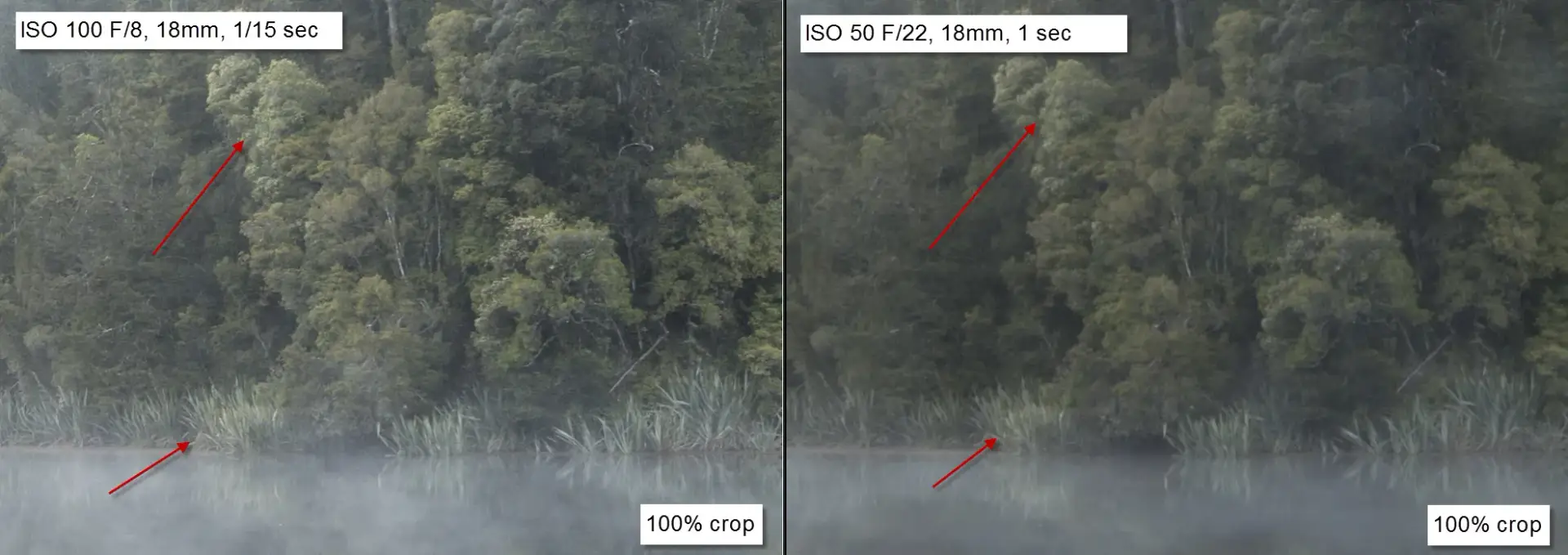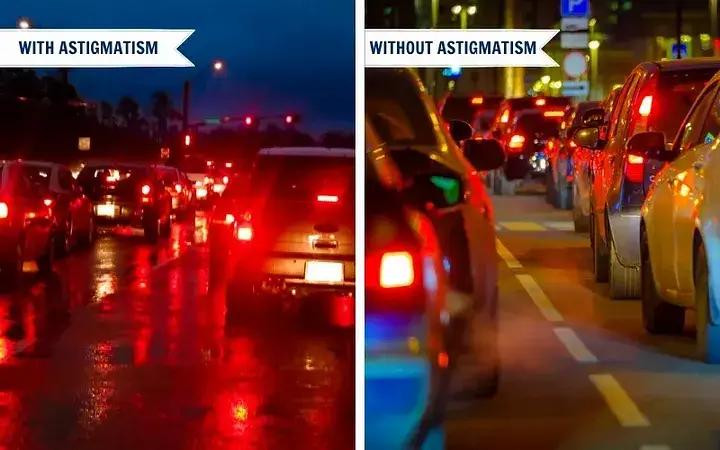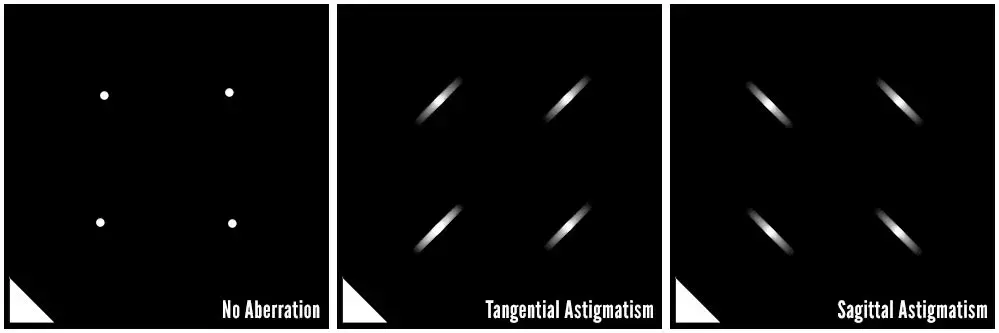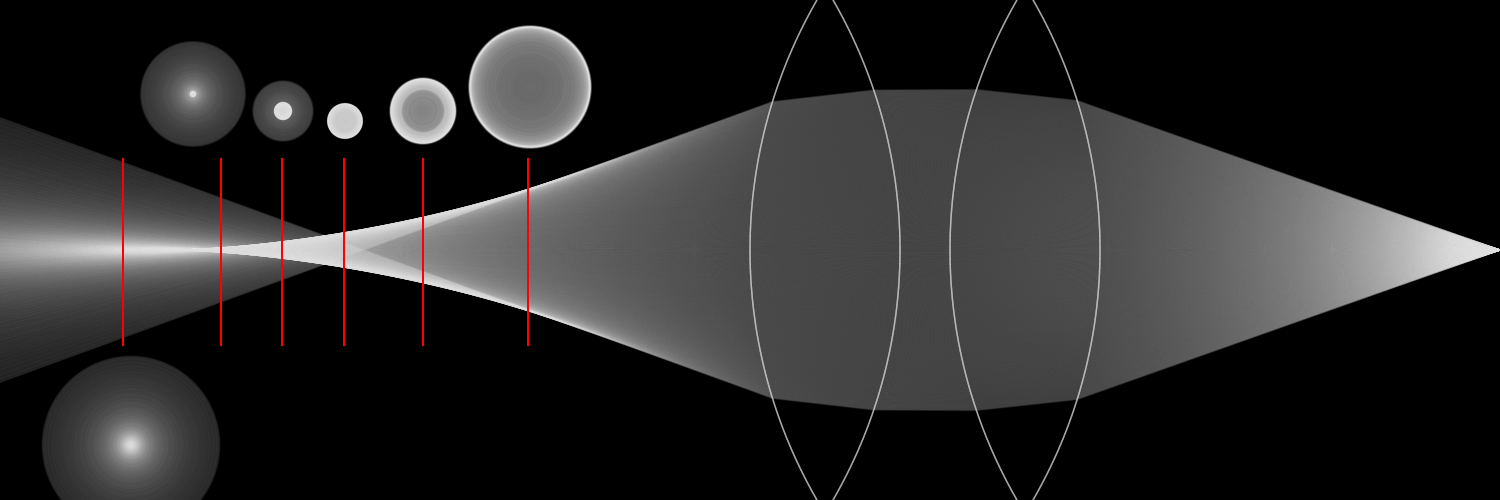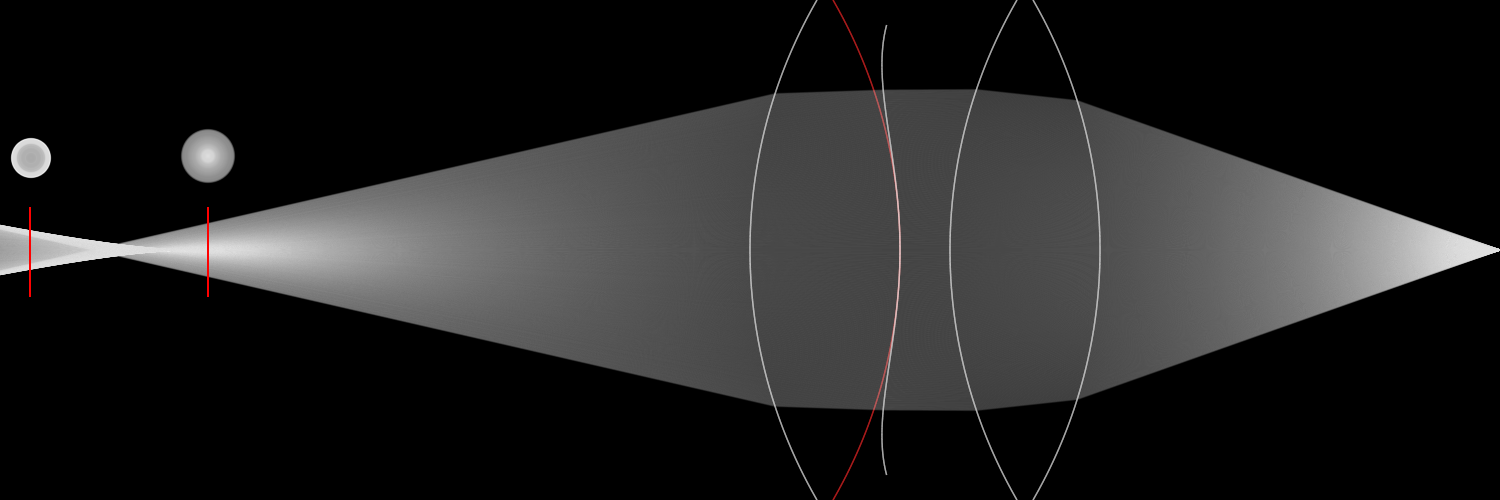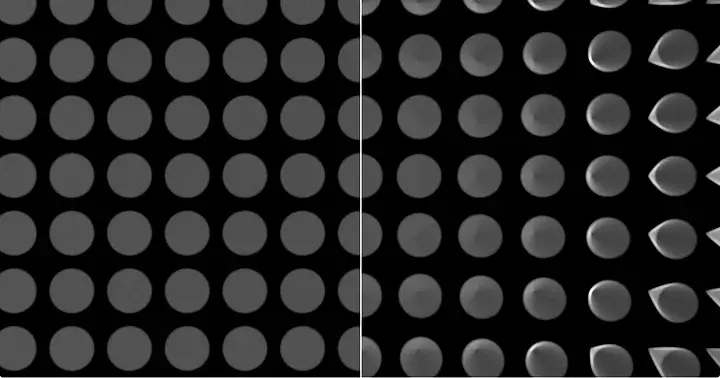
Photography for Compositing - Part I: Advanced Aberrations
- Digging Deeper in Lens Imperfection
What we will mention in this article:
HALATION
Strictly speaking, this isn’t caused by the lens but happens when strong light hits the film after passing through color filters. It creates a halo effect due to light bouncing between layers, especially visible on sensitive yet low dynamic range films.
Today, this effect is often used stylistically to give a more analog vibe.
DIFFRACTION
When light passes through a small hole, it diffracts into a wave pattern. Think of it like a bunch of light particles turning into waves and spreading out, interfering with each other. The smaller the hole, the more interference you get.
Left Pic: Where wave interference is strongest, you see concentric circles like on the right, thickest in the middle.
Middle Pic: Smaller aperture means more diffraction.
Right Pic: Sensor size affects this too. Bigger sensors mean less affected pixels under the same conditions.
Let’s look at some examples:
Narrow apertures cause diffraction, blurring fine details like tree leaves, grass, or hair edges.
ASTIGMATISM
This term’s familiar from eye stuff—it’s like when an eye lens has imperfections. In photography, it’s when light entering the lens focuses differently depending on its path, a tough optical flaw to fix.
Take this example:
If you’ve seen it, car headlights at night look like they’ve got vertical lines going left or right, which can be distracting.
Astigmatism happens when light rays entering the lens at different angles focus on different planes, rather than converging at the same spot. It’s one of the trickiest optical flaws for lenses to completely correct in physical optics.
Astigmatism has two types in different directions according to the vertical and horizontal focus planes:
-
Tangential Astigmatism
-
Sagittal Astigmatism
SPHERICAL ABERRATION
Generally, there’s no need to create bokeh shapes (Kernel) manually, but it serves as a reference.
Due to natural phenomena in physical optics, light rays refract unevenly on the focal plane due to spherical lens surfaces. Bokeh within DOF appears as uniformly bright circles, whereas in front of the DOF, it forms brighter outer rings fading inward, and behind the DOF, the central point is brighter, gradually darkening outward.
Designed to correct spherical aberration, these non-spherical lenses produce concentric circles within the bokeh, hence the name: Onion Ring Bokeh
COMATIC ABERRATION
Often abbreviated as Coma, this occurs when a light source enters the lens from the side, causing it to project onto the sensor at a different size compared to when the light enters from the lens’s center.
This is a physical flaw in the lens, where point light sources off the central vertical axis fail to converge onto the same focal plane as those on the axis. As a result, off-center light appears wedge-shaped. The farther off-axis the light is, the more pronounced this effect becomes. It makes stars appear comet-shaped.
It’s particularly noticeable in the corners of the lens.
In professional-grade cinema cameras or professional camera lenses, manufacturers have basically designed and corrected for this issue. In the footage you typically get in your work, you won’t deal with it.
SWIRLY BOKEH
This lens effect has been repeatedly seen even in blockbuster movies such as “Rebel Moon – The Child of Fire,” “Dune”, “Godzilla vs. Kong – New Empire.” and more. The characteristic of this lens effect is a strong “swirling sensation,” which even softens the edges of objects at the same focus point due to the physical optical properties.
In some images with more pronounced styles, you’ll notice elliptical arcs of bokeh distortion in the corners, known as swirly bokeh.
This effect is often associated with Petzval lenses, which correct chromatic aberration in the first lens group but simultaneously introduce comatic aberration. The aperture corrects for astigmatism, and the second lens group corrects the comatic aberration from the first group, resulting in strong field curvature.
OBSERVATION IN SHOTS
We have talked lots about the theories and those esoteric terms. Let’s apply what we’ve learned with an example:

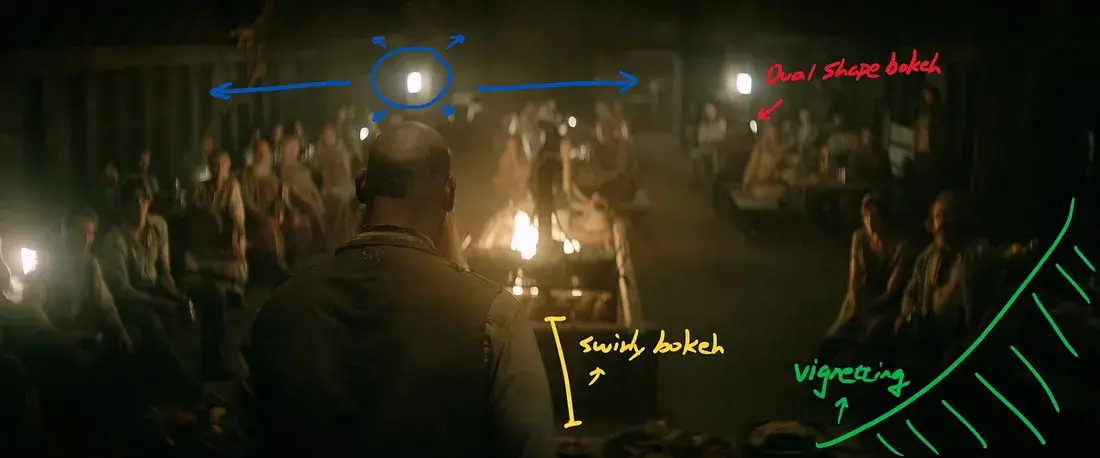
Taking from Zack Snyder’s “Rebel Moon – The Child of Fire,” using an unmodified lens (likely with Petzval elements) adapted onto a RED camera with a wide-angle lens accentuates all aberrations, especially at the corners.
- Dark corners are visible in the bottom left and right (green areas).
- No chromatic aberration, comatic aberration, or astigmatism can be seen. In the foreground, characters are generally on the same focal plane but blur increasingly towards the edges, likely due to the swirly bokeh of the Petzval lens (yellow areas).
- This is a characteristic of a distorted lens, which we haven’t discussed yet. Through vertical elliptical defocus (red areas) and horizontal expansion of glare from light sources (blue areas), we can deduce it’s a distorted lens.
Now, another example from “Rebel Moon”

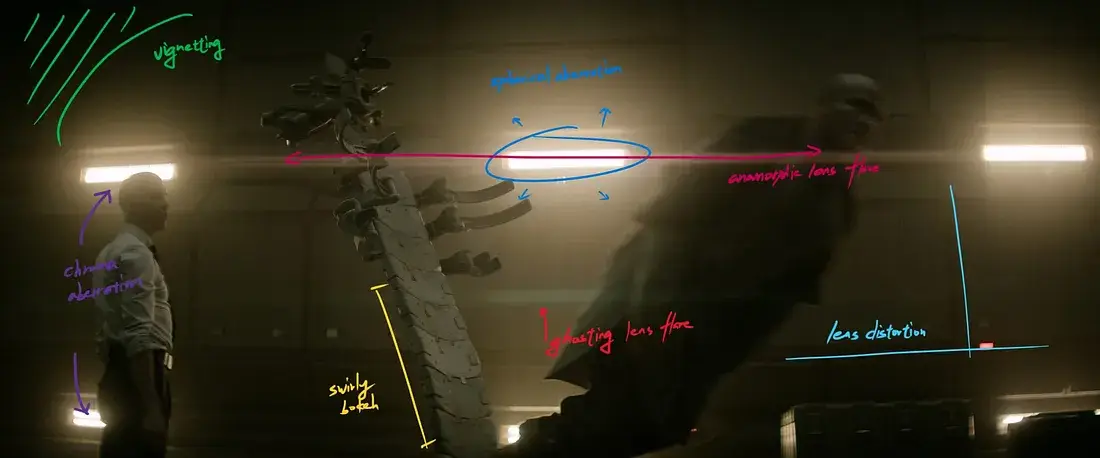
This is one of the shots I’ve done where you can observe several lens flaws:
- You can see vignetting in the corners (green area).
- Based on the vertical and horizontal lines in the frame, you can detect lens distortion, which is common in most lenses (light blue area).
- Despite the overall focus plane of the camera, the image becomes progressively blurry towards the edges, indicating swirl bokeh in the absence of other aberrations (yellow area).
- Horizontal stretching of lens flare unaffected by lens distortion, indicating a deformed lens (peach-colored area).
- Besides horizontal flaring from strong light sources, there’s also a halo effect, known as spherical aberration (blue area).
- In the lower center of the frame, there’s a green light streak caused by ghost lens flare from a light source, appearing as a vertical and horizontal flip around the sensor (red area).
- Near strong light sources, different wavelengths cause chromatic aberration, spreading to darker areas of the frame (purple area).
Sometimes, I see these things in tools dedicated to specific projects. I used to wonder who figured out these weird things and how. While this knowledge isn’t easy to digest, having a basic understanding of these terms can serve as a good reference threshold for setting styles in post-production (Look Dev) or when completing shots without clear instructions.



